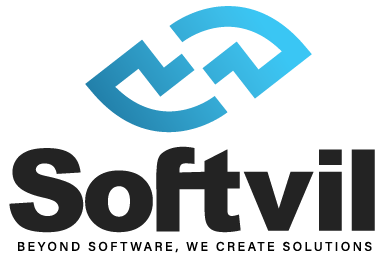Introduction
The Software Testing Life Cycle (STLC) is a structured approach to software testing, comprising several distinct phases from requirement analysis to test reporting and metrics analysis. It serves as a roadmap for ensuring the quality and reliability of software products. In the dynamic landscape of software development, where errors can have profound consequences, STLC plays a pivotal role in mitigating risks and ensuring customer satisfaction. By systematically validating software against predefined criteria, STLC minimizes the likelihood of defects slipping into production, thereby enhancing the overall user experience. For organizations offering software testing services, adherence to STLC not only ensures the delivery of high-quality products but also fosters customer trust and loyalty. In essence, STLC stands as a cornerstone in the realm of software development, aligning objectives, processes, and outcomes to achieve excellence.
Phases of STLC

Ensuring the quality and reliability of software products is paramount in today’s competitive market. The Software Testing Life Cycle (STLC) offers a structured approach to achieving this goal, guiding dedicated QA teams through various phases of testing. Let’s explore each phase in detail:
Requirement Analysis
In this initial phase, the dedicated QA team works closely with stakeholders to understand project requirements thoroughly. They identify testable requirements, ensuring that all aspects of the software are covered during testing. Clear communication and documentation are essential to align testing efforts with project objectives.
Test Planning
The QA team creates a comprehensive test plan outlining test objectives, scope, and strategy. This plan serves as a roadmap for the testing process, detailing the approach to be followed and the resources required. By defining clear goals and timelines, the team can efficiently organise testing activities and allocate resources effectively.
Test Case Development
Based on the requirements identified in the previous phase, the QA team designs and documents test cases. These test cases outline specific scenarios to be tested, including inputs, expected outcomes, and any preconditions or assumptions. Thorough test case development ensures comprehensive coverage of the software’s functionality and helps identify potential defects early in the process.
Test Environment Setup
The QA team sets up the testing infrastructure, including hardware, software, and any additional tools or resources required for testing. This phase involves configuring test environments to mimic the production environment as closely as possible, ensuring accurate testing results. Proper setup is crucial for conducting effective testing across different platforms and configurations.
Test Execution
In this phase, the QA team executes the test cases developed earlier, running various tests to validate the software’s functionality and performance. They log any defects encountered during testing and prioritize them based on severity and impact. Regression testing is also conducted to ensure that changes or fixes do not introduce new issues into the software.
Test Reporting and Metrics
Finally, the QA team generates test reports summarizing the testing activities, results, and any defects found. They analyse test metrics to identify trends, patterns, and areas for improvement. Clear and concise communication of results to stakeholders facilitates informed decision-making and helps drive continuous improvement in the software development process.
Best Practices for Each Phase

Implementing best practices throughout the Software Testing Life Cycle (STLC) is essential for ensuring efficient and effective testing processes. Here, we outline key suggestions and tips for each phase, along with common pitfalls to avoid. By adhering to these best practices, dedicated QA teams can enhance the quality of software products and streamline their testing efforts. Let’s explore these practices in detail:
Requirement Analysis
- Collaborative Approach: Engage stakeholders actively to ensure a thorough understanding of project requirements.
- Clarity and Specificity: Ensure requirements are clear, specific, and testable to avoid ambiguity.
- Document Everything: Document all requirements meticulously to serve as a reference throughout the testing process.
- Pitfalls to Avoid: Rushing through requirement analysis can lead to misunderstandings and missed test cases. Lack of communication with stakeholders can result in incomplete or inaccurate requirements.
Test Planning
- Comprehensive Test Plan: Develop a detailed test plan encompassing test objectives, scope, resources, and timelines.
- Flexibility: Allow for flexibility in the test plan to accommodate changes or unforeseen circumstances.
- Communication: Communicate the test plan effectively to all stakeholders to ensure alignment.
- Pitfalls to Avoid: Overly rigid test plans may hinder adaptation to changing project requirements. Inadequate resource allocation can lead to delays or insufficient test coverage.
Test Case Development
- Requirement Traceability: Ensure that each test case is traceable back to specific project requirements.
- Prioritization: Prioritize test cases based on criticality and frequency of use.
- Clarity and Simplicity: Keep test cases concise, clear, and easy to understand.
- Pitfalls to Avoid: Overly complex or ambiguous test cases can lead to confusion and inefficiency. Lack of documentation can make it challenging to maintain and update test cases over time.
Test Environment Setup
- Reproducibility: Create test environments that can be easily replicated to ensure consistency in testing.
- Isolation: Isolate test environments from production to prevent interference with live systems.
- Automation: Automate environment setup processes where possible to reduce manual effort and minimize errors.
- Pitfalls to Avoid: Inadequate or unstable test environments can lead to unreliable test results. Failure to maintain consistent environments across testing phases can introduce inconsistencies and errors.
Test Execution
- Thoroughness: Execute test cases meticulously to ensure comprehensive coverage of software functionality.
- Defect Management: Log defects promptly and accurately, prioritizing them based on severity and impact.
- Regression Testing: Perform regression testing regularly to detect and prevent regression issues.
- Pitfalls to Avoid: Incomplete or insufficient test execution can result in undetected defects slipping into production. Neglecting regression testing can lead to the reintroduction of previously fixed issues.
Test Reporting and Metrics
- Clear and Concise Reporting: Generate test reports that are easy to understand and communicate key findings effectively.
- Actionable Metrics: Analyse test metrics to identify trends, patterns, and areas for improvement.
- Stakeholder Communication: Share test reports and metrics with stakeholders to facilitate informed decision-making.
- Pitfalls to Avoid: Overloading reports with irrelevant information can obscure important insights. Failing to communicate findings effectively can lead to misunderstandings and misinterpretations.
Tools and Technologies

In the realm of software testing services, leveraging appropriate tools and technologies can significantly enhance the efficiency and effectiveness of testing processes. Softvil Technologies (also known as Softvilmedia), as a leading provider of software testing solutions, offers a comprehensive suite of tools tailored to various phases of the Software Testing Life Cycle (STLC).
Overview of Popular Testing Tools
Softvilmedia provides a wide range of testing tools suitable for different phases of STLC. For requirement analysis, tools like Requirements Traceability Matrix (RTM) software aid in organizing and tracking requirements. Test planning can be facilitated by tools such as TestRail or Jira, which allow for comprehensive test case management and test plan creation. Test case development is streamlined with tools like HP ALM or Zephyr, offering robust test case design and documentation features. For test execution, automation tools like Selenium or Appium prove invaluable for running tests efficiently across multiple platforms and configurations. Test reporting and metrics analysis are simplified with tools like Katalon Analytics or TestComplete, providing insights into test results and performance metrics.
Recommendations for Tool Selection
When selecting testing tools for a project, it’s crucial to consider project requirements, budget constraints, and team expertise. Softvilmedia recommends conducting a thorough evaluation of each tool’s features, scalability, and compatibility with existing systems. Additionally, assessing the level of support and training offered by the tool vendor is essential for successful tool adoption. By aligning tool selection with project needs and objectives, organizations can maximize the value derived from their software testing investments.
Conclusion
In conclusion, navigating through the Software Testing Life Cycle (STLC) is crucial for ensuring the quality and reliability of software products. By following the structured approach outlined in STLC, organisations, including software testing services like Softvilmedia, can systematically validate software against requirements, mitigate risks, and deliver high-quality products to customers. Adherence to best practices in each phase, along with the judicious selection of tools and technologies, enhances efficiency and effectiveness throughout the testing process. Embracing continuous improvement and leveraging insights from test reporting and metrics analysis further strengthens the software development lifecycle. Ultimately, by prioritizing quality assurance and embracing the principles of STLC, organizations can drive innovation, foster customer trust, and achieve excellence in software development endeavours.
FAQs
STLC stands for Software Testing Life Cycle, a structured approach to software testing. It’s crucial for ensuring the quality and reliability of software products by systematically validating them against predefined criteria.
The main phases of STLC include Requirement Analysis, Test Planning, Test Case Development, Test Environment Setup, Test Execution, and Test Reporting and Metrics.
Dedicated QA teams can benefit from STLC by having a clear roadmap for testing activities, ensuring comprehensive coverage of software functionality, and mitigating risks through systematic validation.
Best practices include thorough requirement analysis, comprehensive test planning, clear and concise test case development, meticulous test environment setup, thorough test execution, and effective test reporting and metrics analysis.
Tools and technologies streamline testing processes, enhance efficiency, and facilitate tasks such as requirement analysis, test planning, test case development, test execution, and test reporting.
Some popular testing tools include Requirements Traceability Matrix (RTM) software for requirement analysis, TestRail or Jira for test planning, HP ALM or Zephyr for test case development, Selenium or Appium for test execution, and Katalon Analytics or TestComplete for test reporting.
Organizations should consider project requirements, budget constraints, team expertise, and tool features, scalability, compatibility, support, and training offered by the vendor.
STLC facilitates continuous improvement by providing insights from test reporting and metrics analysis, enabling organizations to identify trends, patterns, and areas for enhancement in their software development processes.
Potential pitfalls include rushing through requirement analysis, having overly rigid test plans, creating complex or ambiguous test cases, inadequate test environment setup, incomplete test execution, and ineffective test reporting and metrics analysis.
Adhering to STLC principles helps organizations drive innovation, foster customer trust, achieve excellence in software development endeavours, and deliver high-quality products that meet user expectations.
About Softvil
Softvil Technologies is a prominent name in the realm of software solutions, specializing in bespoke software development, comprehensive testing, and quality assurance services. With a steadfast commitment to excellence, Softvil Technologies offers a wide array of innovative solutions tailored to meet the unique needs of diverse businesses. By harnessing cutting-edge technologies and adhering to industry best practices, Softvil Technologies empowers organizations to streamline operations, enhance productivity, and achieve strategic objectives. From custom software development to meticulous testing and quality assurance, Softvil Technologies ensures that businesses receive robust, reliable, and high-quality technology solutions that align perfectly with their objectives.

